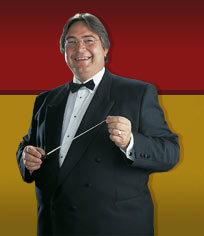|
Articles
| Working with Mixed Ability Players |
| Having briefly discussed the topic of ‘Teaching Young Players’, Robert now gives a little advice on how to teach groups of mixed ability players. |
In my opinion it’s extremely important to accurately assess what the pupils can do in order to set them achievable goals. Many teachers find themselves teaching mixed-ability groups of beginners – in this scenario it is very easy to work to the slowest pupil, keeping everyone else waiting. In many cases this can lead to boredom and behavioural problems for the faster learner. Equally, keeping pace with the fastest learner in the group can be discouraging to the majority, and ultimately can result in pupils giving up. The answer to this age old problem lies in the expertise of the teacher. It’s a problem which is recognised throughout education. The need to differentiate between one pupil and another is not an easy one; it requires planning, thought and patience.
There are two main ways to differentiate between pupils; firstly, we can give them different materials or instruments. In an ensemble situation one player might play a difficult melody line while his/her less able peer plays an easier harmony part, with both parts being equally demanding on both pupils’ individual ability. It is important to be flexible and experimental in the first few months; I have experienced occasions where a very bright and progressive beginner enjoyed playing the relatively easy to learn euphonium and her friend was struggling with the cornet, a more difficult instrument to learn in the early stages. They swapped instruments and both found their lessons much more interesting and challenging. This could also be seen as a form of differentiation (by resource).
The second method of differentiating is by response. The more experienced teacher will use this method to great effect. To ask a bright pupil to play something from memory where her/his peers use the music is a typical method of making the same outcome more difficult for one pupil over another. Other strategies when giving individual lessons in a group situation could be to ask the more advanced player to:
• Take fewer breaths.
• Play faster.
• Play much slower.
• Play softer or louder.
• Play in a different octave.
• Alter articulations.
Once the teacher recognises pupil requirements and learns the skills to keep pupils interested and musically stretched, they will find their drop-out rate reduce and hopefully notice a consistent level of improvement by all their pupils.
No one recognises the needs of pupils better than their teachers. With this in mind, I have found it extremely useful to arrange music for my own beginner ensembles in the past to tailor their needs. Don’t be afraid to discuss the topic with colleagues and ask each other what material and strategies you use. Exchanging ideas can be extremely enlightening; discussing similarities and differences in common areas of teaching can reward us all as teachers. More importantly it better equips us to give best possible advice to our pupils.
© Robert Childs |
| |
|
|
